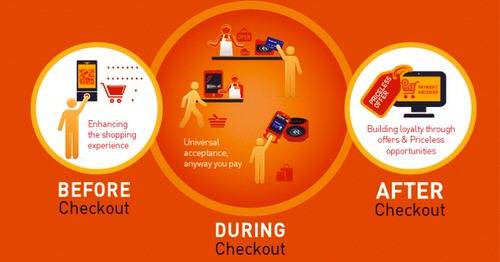
The hype around mobile payments sometimes obscures the fact that not only aren’t there yet any clear winners – there’s not even a clear market for services that have a lot of potential, but which most ordinary consumers seem reluctant to embrace.
On the corporate side, everybody wants a slice of the potential multi-billion dollar pie. That’s cluttered the mobile payments landscape with so many products and solutions – and no real infrastructure and platforms – that it has actually slowed down the potential acceptance of paying for goods with your smartphone.
Too Many Options
Think about it. Google has its contender in its NFC-based Google Wallet. The mobile carriers their own NFC option called Isis. Square and a variety of competitors have the dongle-based solutions covered. (PayPal has its own copycat dongle – yes, the one that’s triangular instead of square.) Visa, MasterCard and American Express all have their own technologies and digital wallets.
Major retailers basically got fed up, said, “screw you” to the rest of the mobile payments industry and started building their own, though so far incredibly vague, mobile wallet. A variety of startups are also trying to sidestep the established players. If you’re a retailer, how are you ever going to figure out what to use for the supposed mobile payments revolution?
It’s a real mess. Mobile payments has become such a muddied place that it’s nearly impossible to see the entire ecosystem or to discern which way to move.
MasterCard Takes The Platform
MasterCard wants to separate itself from all that. Today, at Mobile World Congress in Barcelona, it has announced a new “platform” in the mobile payments race it calls MasterPass.
The effort is an evolution of the PayPass system MasterCard released in the spring of 2012. The goal of MasterPass is to bring together all the different forms of payments that people use to pay for things – cards, digital wallets and the like – and to give retailers one multi-tool option for how to integrate mobile payments.
“We tried to think about the lessons learned at an industry level of what’s worked and not worked in the past. We tried to take a hard look at what has been working, where have we seen mobile payment apps really take off,” said Ed Olebe, MasterCard’s group head of MasterPass Services in an interview with ReadWrite. “The way we can envision this working at the greatest scale, and for us this is really about moving into digital. So our ultimate vision with all of this stuff, this is going beyond plastic cards into fully digital payments.”

Offering A MasterPass
MasterPass will have three primary elements:
- Checkout Services: For in-store or online purchases, MasterPass will support NFC, QR Codes or mobile devices at the point-of-sale (the register).
- Connected Wallets: The digital wallet is no longer just a MasterCard PayPass option. MasterPass instead creates a platform where individual banks, retailers and partners can create mobile wallets. In addition to MasterCard, consumers will be able to pair other branded credit and debit cards to the wallet.
- Value Added Services: The kicker in any mobile payments. Users and merchants can get data about the transaction, balances, loyalty programs and real-time alerts.
“Really what we’re doing is we’re offering merchants a whole suite of services that allow them to execute checkouts in all manner of different ways to enable them to have what they would call a sort of omni-channel consumer experience,” Olebe said.
MasterCard envisions MasterPass as a hub-and-spoke type of environment. At the center is MasterPass and its ability to digitize payments and offer application programming interfaces (APIs) and standard structures (such as cryptography and security) for transacting payments. The spokes are MasterCard’s technology partners that build apps and transactional elements such as digital wallets and point-of-sale software for retailers.
For instance, MasterCard is partnering with mFoundry to create digital wallet apps for banks and Verifone that makes point-of-sale hardware and software. These partners can then integrate straight to retailers and services. For instance, if you take a cab in London, the credit card reader is likely made by Verifone. Through these partnerships, MasterCard can extend the platform from the relatively closed solution that was the PayPass wallet project into a platform that connects a variety of retailers, payment methods and technologies.
“We’re saying, you choose who you want to work with, you decide what experience you want and we’ll plug in to it,” Olebe said.

Hurdling Traditional Obstacles
Two basic problems have hindered mobile payments adoption: standards and infrastructure. With all the players jostling for position, there are too many standards for merchants and consumers to consider. That, in turn, hinders the development of payment infrastructure, since retailers don’t know what equipment to install or what software to deploy.
MasterCard says its discussions with merchants led it to realize that top-down solutions from technology or financial companies won’t work. The way forward has to originate within the retailer, after which a company like MasterCard can enable it.
“Our job is to provide services and APIs that even if they make different design choices, they could go forward in a consistent way for that customer,” Olebe said. “We’re not telling merchants you have to do it one way. What we’re saying is, ‘We recognize that two very rational merchants even in the same category can come up with different perspectives on the right kind of tech they want to invest in and the right kind of experience.’”
Which all sounds great. Now to see whether merchants are ready to dance with MasterPass, even if it lets them lead.

















